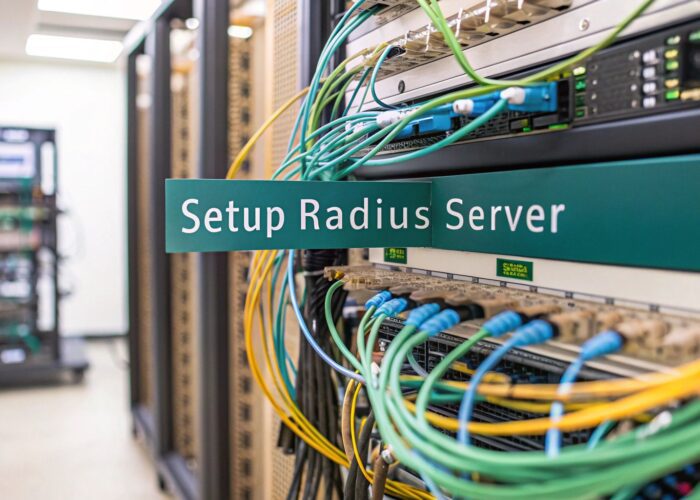If the challenges involved in managing your employees’ bandwidth, security, and mobility needs are keeping you awake at night, we’ve got some tough news: the rapid pace at which technology changes means those challenges won’t go away anytime soon. Implementing a modern IT infrastructure that’s able to support always-connected mobile devices, data-hogging applications, and “bring your own device” (BYOD) practices is no longer a “nice-to-have”—it’s a necessity.

The way forward lies in adopting a scalable solution that can grow as the demands and pressures on a network increase. The best way to achieve this goal is to migrate your IT infrastructure and manage it entirely through the cloud. Here are 5 reasons why:
1. Manage and troubleshoot from anywhere
Traditionally, managing networks or troubleshooting a network issue requires someone to be physically present. When dealing with multi-site deployments or other situations in which it isn’t always possible for IT to be on-site, this form of management and troubleshooting cannot scale and quickly proves untenable.
With cloud managed IT, managing and troubleshooting issues from anywhere is finally a reality. An IT administrator can quickly get alerted about a network issue, diagnose the problem, and devise a solution from any computer with internet access. For example, with cloud managed IT, an IT admin can quickly run a cable test on a cable running between a switch and an access point to determine whether the cable or the AP is at fault. Cloud managed IT doesn’t just help save time and resources; it unlocks entirely new capabilities that simply aren’t possible with legacy IT solutions.
2. Easy to set up, configure, and manage
For most IT admins, the thought of installing and maintaining network infrastructure doesn’t exactly inspire joy—even less so when it comes to multi-site deployments. The hassles involved are frustrating, to say the least.
Managing IT infrastructure through the cloud dramatically simplifies ordinarily challenging tasks and cuts down on time and cost. With zero-touch provisioning, devices such as access points, security appliances, and VoIP phones can be pre-configured before they even arrive on-site. Configurations download automatically once the device is connected to the network for a true plug-and-play experience. Furthermore, “virtual stacking” allows IT admins to bulk-configure ports on internet-connected switches, whether these switches are physically located in Berlin or Baltimore. Managing IT infrastructure through the cloud thus requires less investment in on-site setup, significantly reducing staff costs.
3. Superior security
In order to maintain a secure stack that ensures high levels of productivity and uptime, IT needs constant visibility into network traffic, security threats, and device activity. Keeping security definitions and device firmware up-to-date is also crucial. Cloud managed IT makes it simple for IT admins to get a real-time understanding of what’s going on network-wide and to ensure that security threats are kept at bay.
With a fully cloud managed infrastructure, IT admins can look at application usage on a per-client basis and enforce security policies at the firewall or access point level, all from one dashboard. Additionally, when threats arise, admins can rest assured knowing that the latest security updates have already been pushed to firewall devices, silently and automatically, over the Internet. This kind of visibility and automation significantly reduces the burden on IT while ensuring complete network security.
4. Interconnected management unlocks new possibilities
Traditional IT management is a piecemeal affair. Because there are different vendors for different parts of the stack—wireless, switching, security, mobile device management, and more—configuring more than one category of device at a time to accomplish a certain network-wide goal is usually not possible. Even worse, IT admins have to learn how to navigate many different interfaces and deal with multiple support lines if they run into any issues.
The beauty of cloud managed IT is that every part of the stack can be controlled from a single management interface. This enables different elements of your IT infrastructure to work together in new ways. For instance, with every device communicating with one another and with the cloud, IT admins can view a complete network topology, updated live, and instantly troubleshoot issues with any device. As the demand on the network grows and new IT infrastructure is added, every new piece of gear can be managed from the same interface. This easy scalability makes cloud managed IT ideal for growing organizations with ever-increasing numbers of users, devices, and sites.
5. Lower TCO (total cost of ownership)
Of course, one of the most important considerations when it comes to choosing which IT stack to implement is overall cost. And while the cost of the initial hardware is certainly important, too many companies focus only on the hardware cost and ignore ongoing support and maintenance costs. The beauty of cloud managed IT is that the flexibility and ease-of-use inherent in the cloud managed model means much lower management costs over time, resulting in a much lower TCO over the span of a few years.
As mentioned earlier, a cloud managed stack provides your IT team with extensive visibility into network performance, not to mention actionable alerts whenever there’s a hiccup. You’ll be able to proactively diagnose issues and manage problems before they impact your business; as the saying goes, “a stitch in time saves nine.” Additionally, with the cloud managed model, multi-site management is simple and straightforward. All of this means that the TCO of a cloud managed IT stack is much lower than that of traditional IT infrastructure—often by thousands of dollars.
Conclusion
Once upon a time, on-site network controllers, command line interfaces, and manual firewall configuration were enough to keep a network afloat. But a creaky old IT infrastructure can no longer keep up with the needs of modern organizations. Embracing cloud managed IT presents significant advantages for admins who want to implement a forward-thinking IT infrastructure built to last.
Enter Cisco Meraki, a leader in cloud managed IT. Meraki offers a full stack of cloud managed IT solutions—wireless access points, switches, security appliances, enterprise mobility management, telephony, and security cameras—all managed through the Meraki Dashboard. With Meraki, enterprises and SMBs alike have discovered the benefits of adopting a cloud managed stack. Contact us to learn more or attend one of our webinars here.



